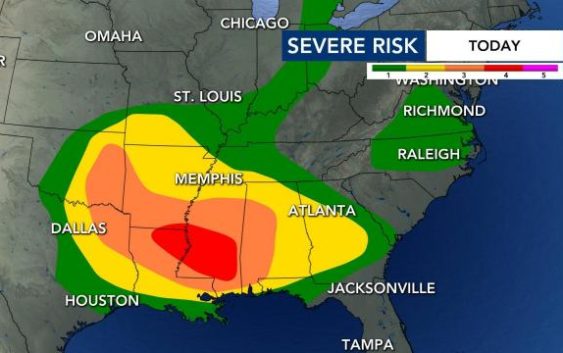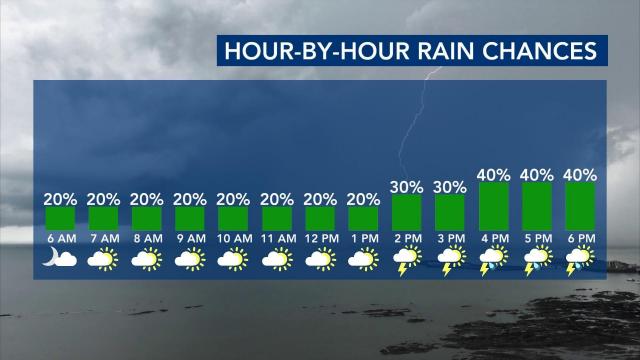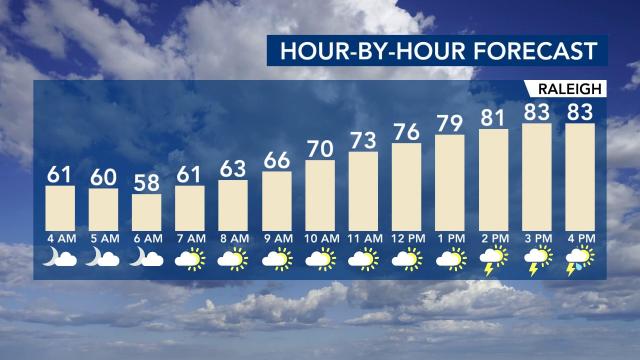- Hays County emergency alerts cause confusion during Tuesday's wildfires
- Tuesday's wildfires scorched more than 500 acres in south Bexar County
- How big were this week's wildfires in Bexar County?
- Crews contain wildfire in southeast Williamson County
- Wildfire contained to 300 acres in northwest Matagorda County
Triangle under Level 1 risk for severe weather on Friday

Raleigh, N.C. — After nearly a week of dry weather, scattered thunderstorms are possible for the next few afternoons.
An approaching cold-front will increase the chances for rain, according to WRAL meteorologist Kat Campbell.
Track rain with the DualDoppler5000
Most of the WRAL viewing area is under a Level 1 risk for severe weather on Friday. The day will start out mostly sunny and quiet. A few spotty storms could develop later on.
Storms on Friday will be isolated with a 30% chance for rain. Those chances will increase to 40% on Friday night.
In the Triangle, rain and storms will be most likely in the afternoon and evening hours, but they will be isolated, so don’t cancel your plans. We’ll keep monitoring them to see if high school football games will be impacted.
On Friday, Raleigh will top out at 83 degrees.
The best chance for thunderstorms will be Saturday with a 50% chance of rain.
Rain chances will then drop back down to 30% for Sunday.
“No day is going to be a washout this weekend and not everybody is going to see rain,” said Campbell. “These are more along the lines for hit-or-miss summer-time thunderstorms.”
Storms and rain will also be possible Saturday afternoon, but again, they will be scattered. The good news is the rain on Friday and Saturday could wash away some of the pollen that seems to be covering everything.
According to Campbell, although pollen counts typically peak for about three weeks, this week was probably the worst of it.
Campbell said that pine pollen is the yellow pollen that gets all over everything, but it may not be what’s making your eyes water.
“Some of the pollens that cause the biggest issues are the ones that you really can’t see,” Campbell said.

